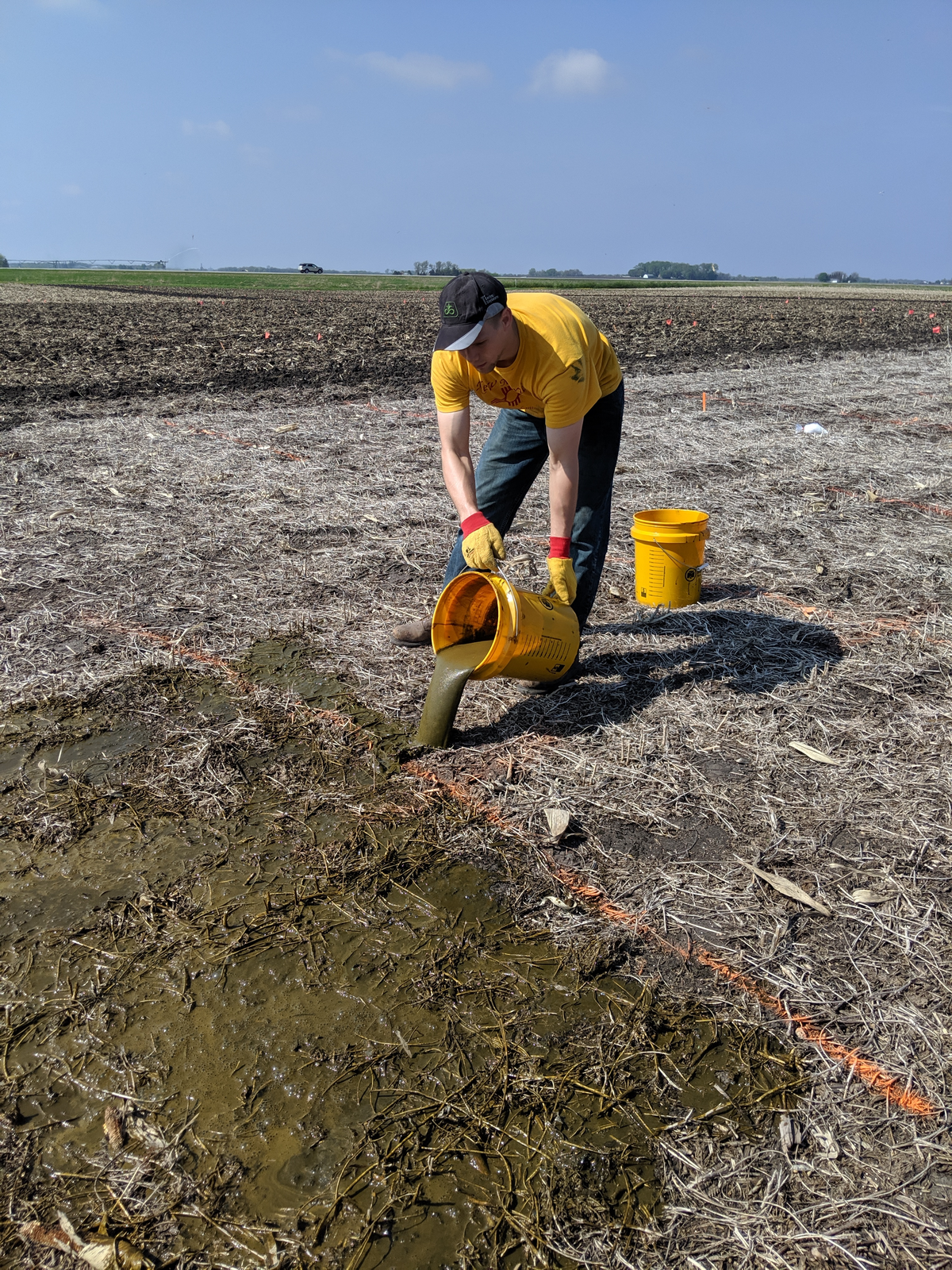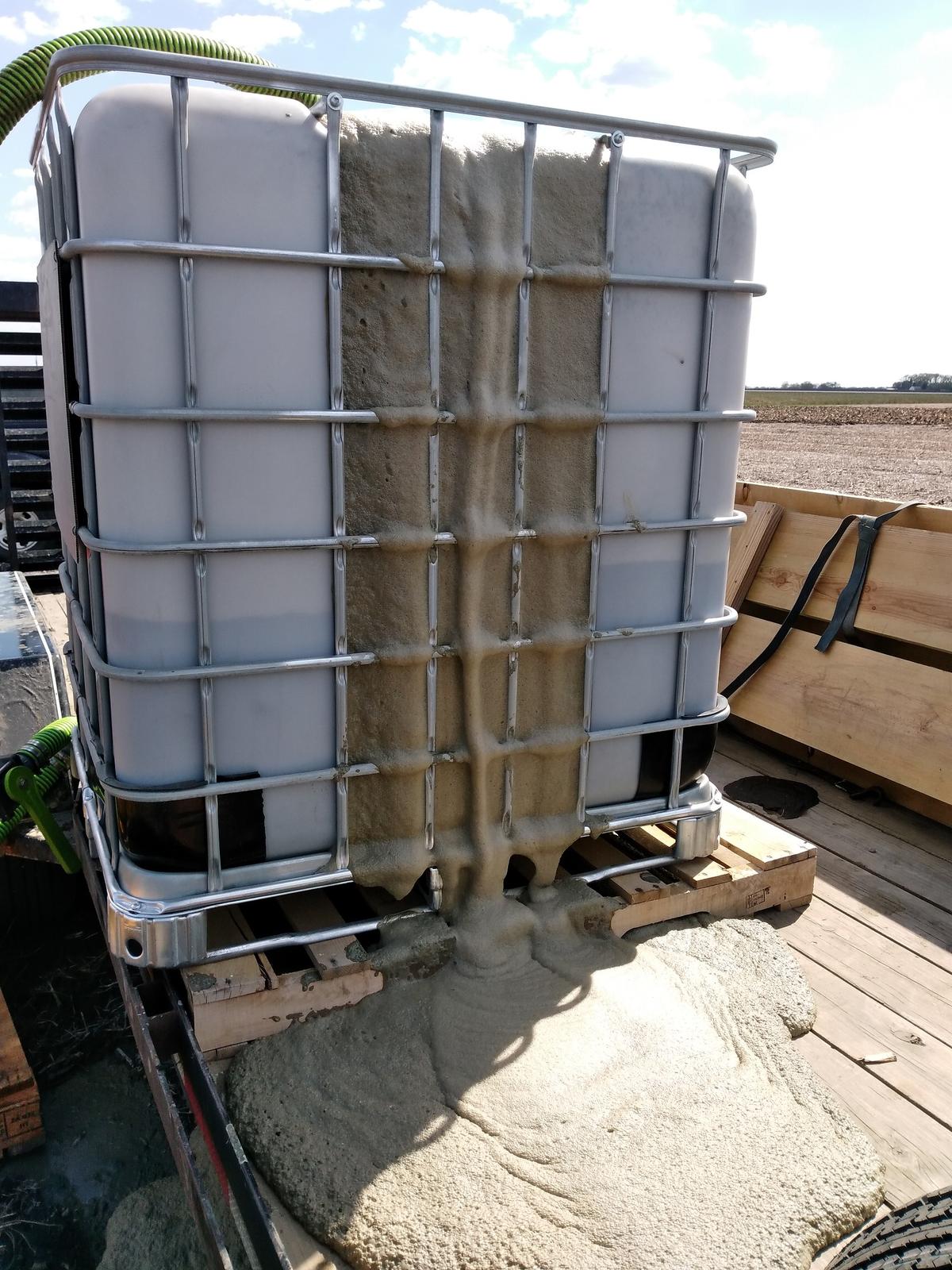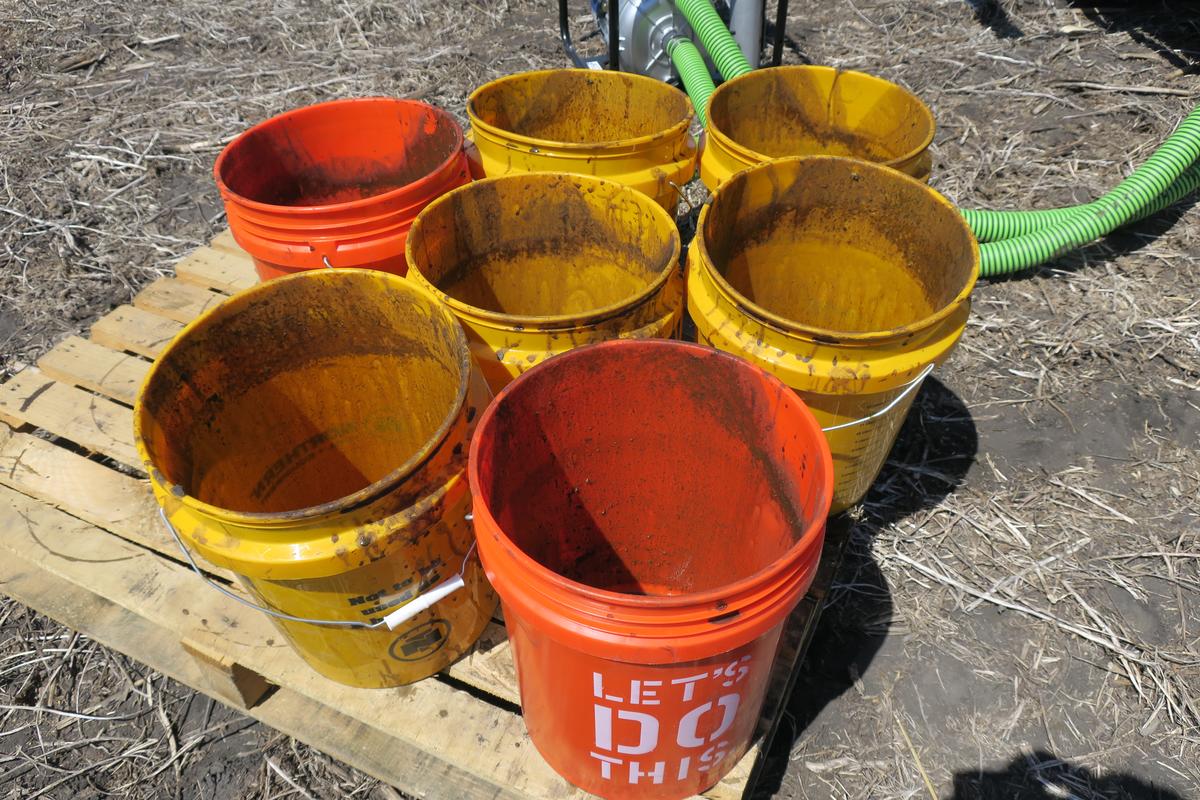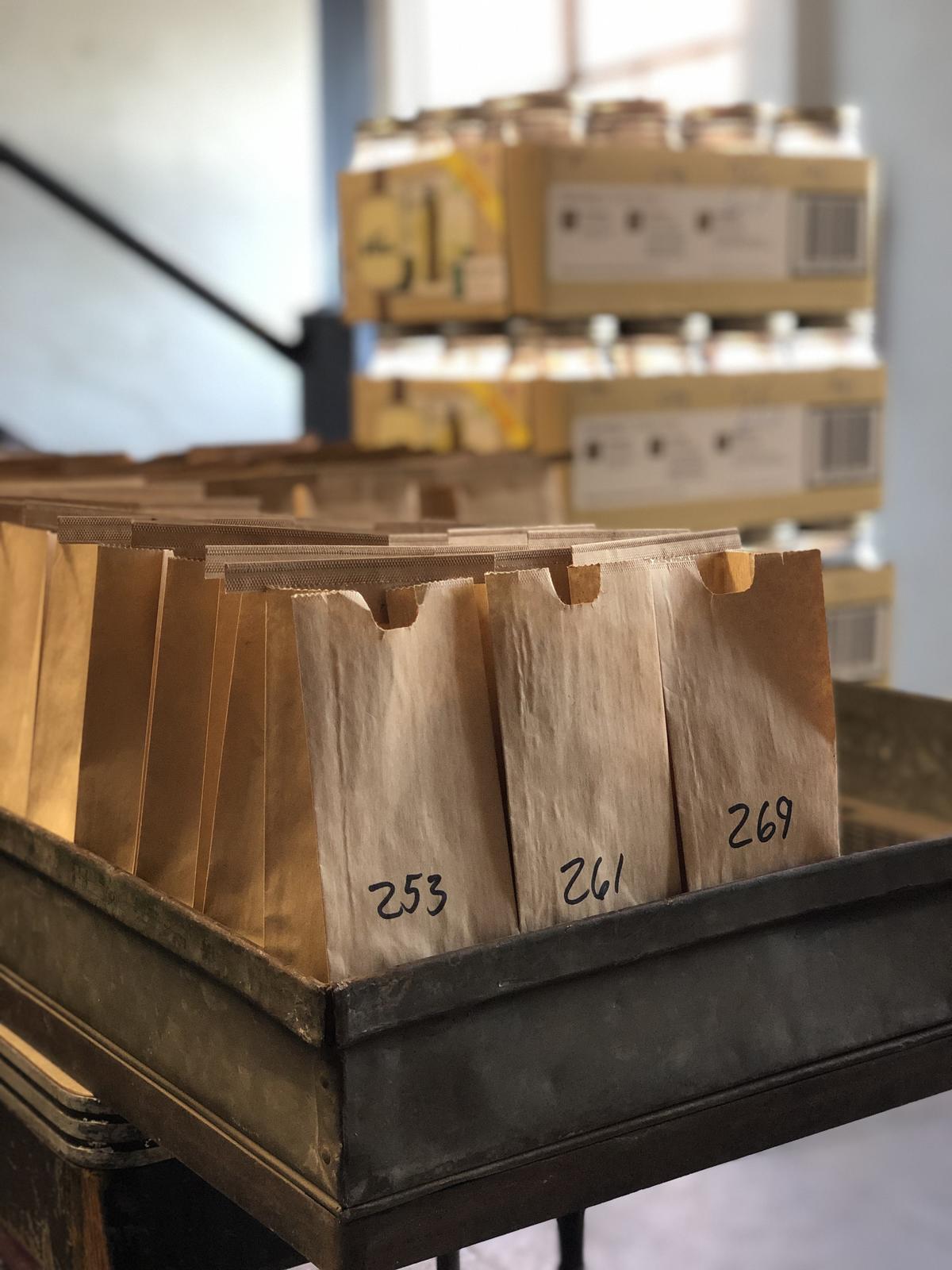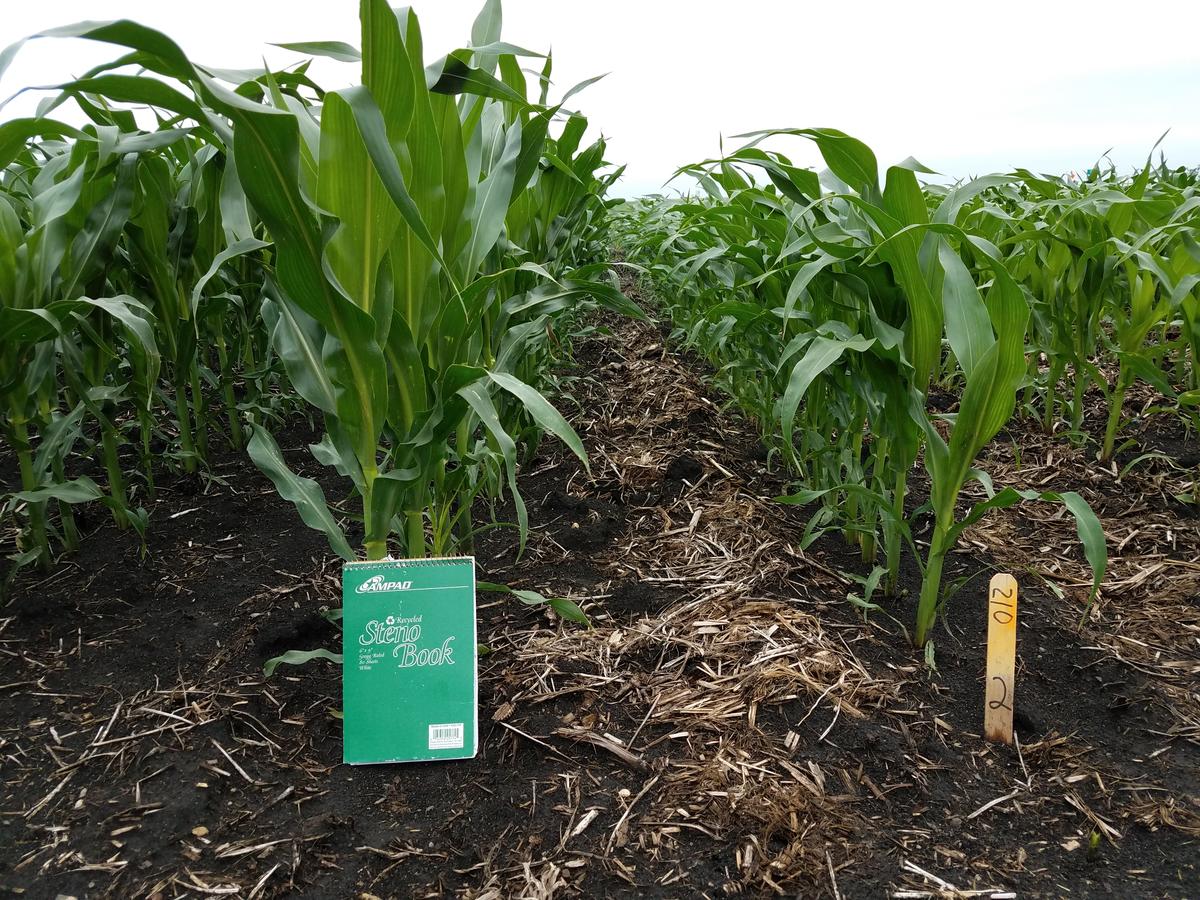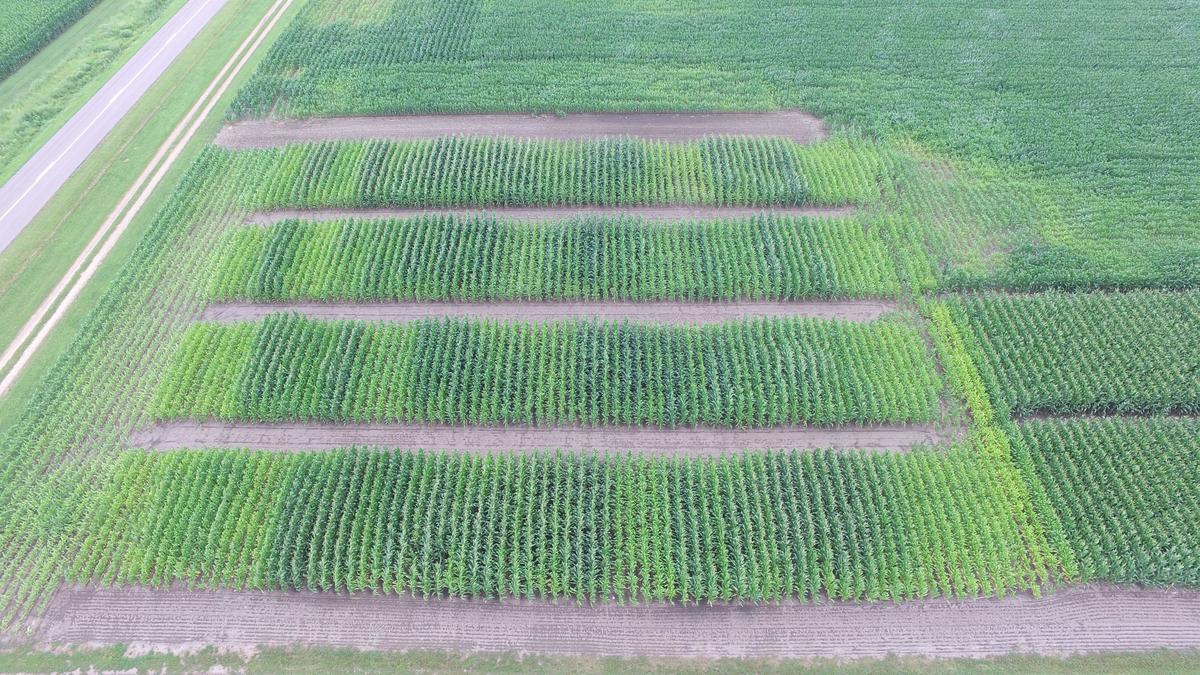Animal manure is a great nutrient source, but not all nutrients are 100% available the first year after application. For nitrogen, the amount that is available will depend on the animal species that made the manure, what kind of bedding (if any) was used, how the manure was stored, and how the manure was applied. Phosphorus availability is not as complicated, but recent research has shown that soil types may have an impact. On top of this, the shifting weather patterns we've seen in recent years may be influencing availability rates, as well. All of these factors can make it difficult to estimate nutrient credits from manure for proper nutrient management planning.
Our goal is to verify and/or update nitrogen and phosphorus credit recommendations from manure so that farmers are able to make better decisions when purchasing and applying commercial fertilizers in following years. The objectives of this study are to use laboratory and field studies to: 1) estimate nitrogen and phosphorus mineralization from a variety of manures and soil types and 2) determine the best calculation for plant available nitrogen (PAN) and plant available phosphorus (PAP). This is a multi-year project at two locations in Minnesota.
Thanks to Minnesota's Agricultural Fertilizer Research and Education Council (AFREC) for supporting this research.
